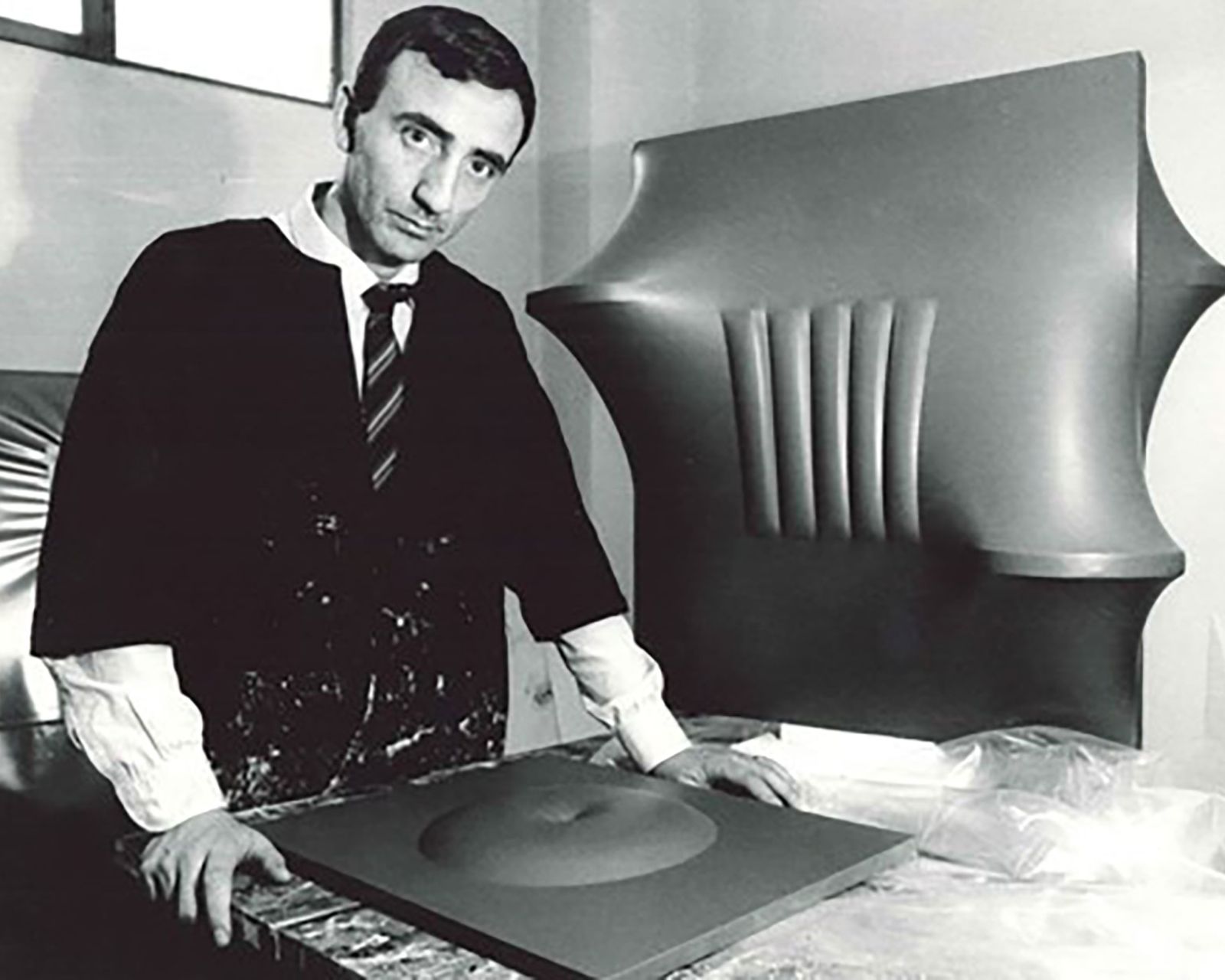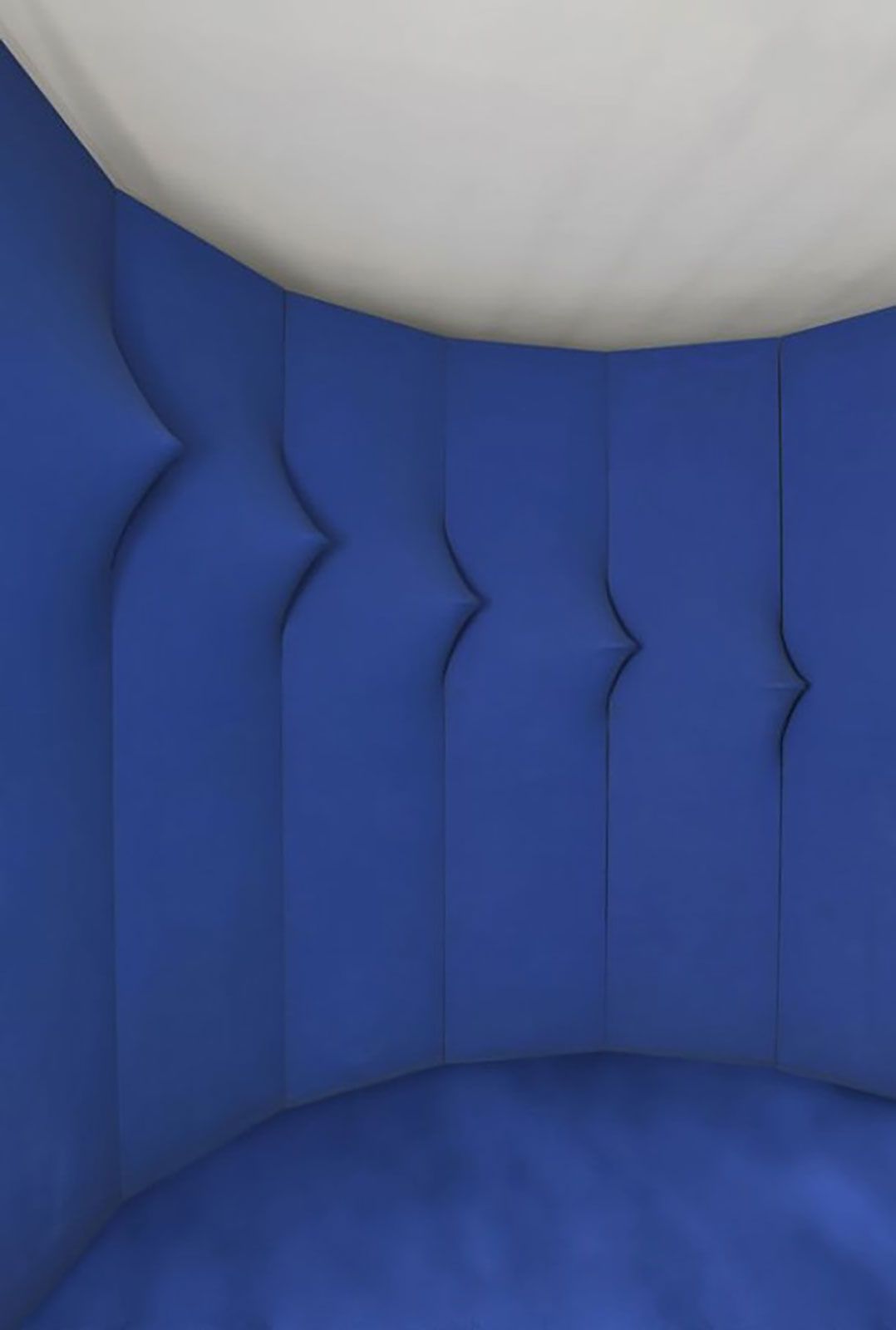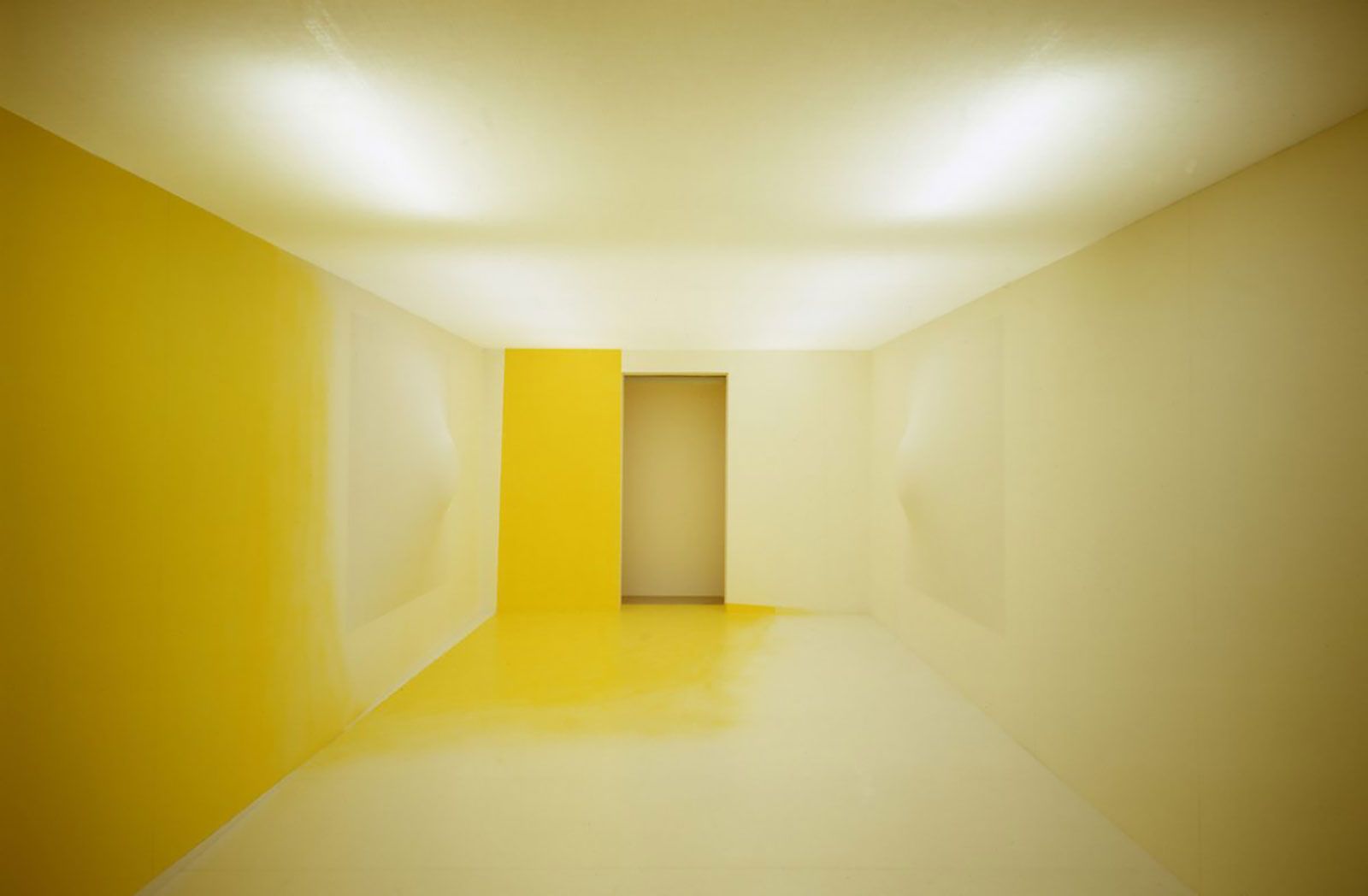Agostino Bonalumi: Expansion and Distortion


Agostino Bonalumi with one of his works; “White Ambience, Space Withheld and Space Invaded” (2002), part of Guggenheim collection
The works of Agostino Bonalumi exist in the suspension between sculptural form and painterly surface. Informed by the Zero group and the avant-garde tendencies of the time, Bonalumi explored material as the subject in rejection of the Art Informel. His explorations of the sensory experience of an artwork are manifested within his visually iconic legacy saturated by colourful and striking minimalistic works that challenge the viewer’s perception of art and its spatial limitations.

Agostino Bonalumi in his studio

Agostino Bonalumi in his studio

Exhibition Poster fro Bonalumi, Castellani and Manzoni, in 1959
Born in July 1935 in Milan, Bonalumi emerged as a self-taught painter in the local art scene. Originally a student of technical and mechanical design, the artist began attending the studio of Enrico Baj where he made acquaintance with Piero Manzoni, Enrico Castellani and Lucio Fontana. Fontana would later become a sort of mentor for Bonalumi whose practice followed the similar path of seeking to expand the physical and formal dimension of the canvas. In 1956 at the Galleria Totti, Bonalumi’s first solo exhibition was inaugurated, and the artist quickly established himself at the forefront of the Italian avant-garde.
Founding member of the art journal “Azimuth”, Bonalumi would publish investigative reflections on the work of Fontana. His visits to the artist studio would greatly help the artist to develop his individual iconic idiom. In comparison to Fontana, Bonalumi did not cut the surface, neither did he create texture, instead the colours, the shapes and the shadows distorted and expanded the canvas. Through the utilisation of geometric frames and wooden structures, Bonalumi would deform the picture plane, causing stretching and bulges. With specific canvas that had malleable qualities, the artist challenged the two-dimensional surface as one that existed beyond the support for painterly application and embraced it as a formal entity in its own existence. In Bonalumi’s own vocabulary, he referred to these works as “estroflessioni”, “extroflections”. This term describes explicitly the opposite of the “retroflections”, in which something is bent backwards. In Bonalumi’s oeuvre, the “extroflections” bend forward. Through the physical tension, they expand into the space, reaching forward in time, into the future of art. In order to support the artist’s claim of the surface itself becoming the work of art, he adopted a strict monochromatic colour palette that ranges from pure white, to pitch black, bold yellows and deep blues. Ridges and bulges quietly interrupted the stimulating depth of colour creating new hues and shadows that formed the work’s spatial domination on the wall.
“I start from Zero, what do I do? There is nothing and then something happens”
Bonalumi’s evolving practice was tightly linked to the activities of the German art movement and collective the Zero group. Amongst Italian peers such as Lucio Fontana, Piero Manzoni and Enrico Castellani the artist exhibited across Europe and the US as part of the international formation of like-minded artists. Its three founding members Heinz Mack, Otto Piene and Günther Uecker, followed a manifestation that sought to distance itself from concurrent post-war movements such as Tachisme or Art Informel. Wanting to emphasise the work’s material over the artist’s subjectivity, subjects such as light and space became central leitmotifs and media for the artists of Zero.

Agostino Bobalumi together with Lucio Fontana and Enrico Castellani

Agostino Bonalumi with one of his “extroflections”

Zero artists in Düsseldorf

Zero exhibition in London’s Signals at 39 Wigmore Street, 1966
“From the unfinished by Michelangelo to the Leonardo’ sfumato, to Impressionism, to Expressionism , in modern art the unfinished, the unspecified, the elusive perception, is the prime instrument of style; the overcoming of the finished as limit. In the tendencies where the work of art is work of art object, form is from the project that defines it, while the unfinished, in the closed form, will be the elusive perception, from the absence of the symbol, the unwanted that however is subject, or experience: in a word appearance.”

Agostino Bonalumi, “Blu abitabile”, 1967

Agostino Bonalumi, “Ambiente bianco (White Environment)”
During the late 1960s, Bonalumi further expanded his practice by creating large-scale versions of his canvasses whose all-encompassing presence fully invaded the exhibition space covering walls, ceilings, corridors and floors. Experimenting with artistic theories concerned with constructivism, the artist emerged the visitor in an all-surrounding sensory experience that included special flooring and textured material. These works demonstrated the artist’s growing interest in the impact of luminosity and shadow of his painted surfaces. His environmental installations are the epitome of his oeuvre and emblematic of the sensory experience of the encounter with a Bonalumi sculpture-painting.

Agostino Bonalumi, “Opera Ambiente Giallo-Bianco”, 2003

Agostino Bonalumi, “Opera Ambiente Giallo-Bianco”, 2003